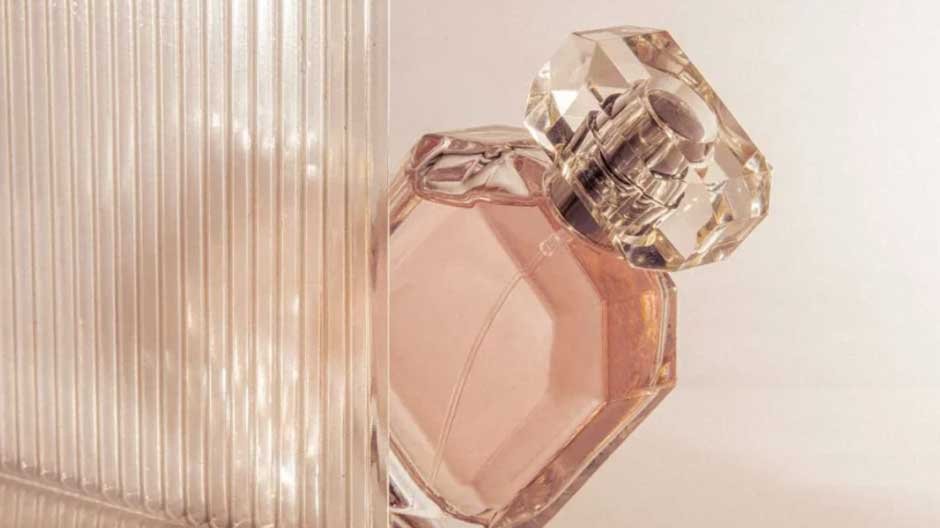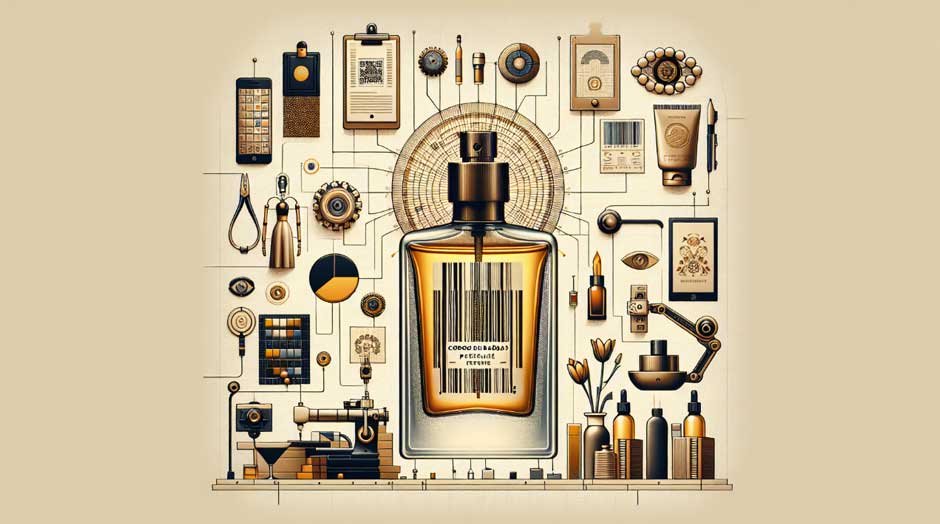In the realm of luxury fragrances, the concept of código de barras perfume unfolds as a unique blend of technology and scent, marking a distinctive presence in the perfume industry. This innovative approach not only entices the senses but also embeds a deeper meaning and connection between the consumer and their chosen essence. The significance of código de barras perfume extends beyond mere aesthetics, offering a glimpse into the intricate dance of ingredients that compose its soul, thus highlighting its importance in the ever-evolving world of fragrances.
The journey through this article will explore the rich history and evolution of código de barras perfume, detailing the meticulous craft that goes into creating the perfect fragrance. It will shed light on understanding and decoding the complexities behind perfume barcodes, providing insights into the influence and trends shaping the perfume industry. Furthermore, as we venture into the future of código de barras perfume, the narrative will uncover the potential paths this fusion of technology and tradition might take. By delving into these aspects, readers will gain a comprehensive view of the multifaceted world of código de barras perfume, understanding its legacy and envisioning its future trajectory in the global market.
History and Evolution of Codigo de Barras Perfume
Origins and Foundation
The inception of Código de Barras Perfume traces back to a vision held by master perfumers who were determined to redefine luxury in the fragrance industry. The brand began as a bold endeavor to transform societal norms into a symbol of luxury and decadence. This vision was not just about creating a fragrance but establishing a new benchmark in the realm of high-end perfumes.
Brand Philosophy and Values
Central to Código de Barras Perfume is a commitment to quality, innovation, and timeless elegance. Each bottle crafted under this brand is a testament to the meticulous craftsmanship and innovative spirit that defines their philosophy. The brand encapsulates its essence literally and figuratively through the barcode system, ensuring traceability and quality assurance that is crucial for maintaining the trust and satisfaction of their discerning clientele.
Key Milestones in Brand Evolution
- Introduction of Barcode System: The adoption of the barcode system marked a significant technological advancement in the perfume industry. Initially serving as a basic cataloguing tool, it evolved to encapsulate crucial manufacturing data such as production dates and batch numbers, which provided a detailed chronicle of each perfume’s creation.
- Expansion of Barcode Types: Over the years, the brand has incorporated various types of barcodes, including UPC and EAN, to meet global standards and enhance the tracking and management of their products within the supply chain.
- Quality Assurance through Barcodes: For Código de Barras Perfume, the barcode became a stamp of authenticity and a guarantee of quality. This not only reassured customers of the genuineness of their purchase but also bolstered the brand’s reputation in the luxury market.
By understanding the evolution and strategic implementations within Código de Barras Perfume, consumers and industry insiders can appreciate the depth of innovation and commitment to excellence that the brand stands for.
Crafting the Perfect Fragrance
Perfume Composition
When exploring Codigo de Barras Perfume, one cannot overlook the intricate blend of key notes and accords that define its captivating scent. The fragrance opens with a burst of fresh citrus notes, layered with floral hints of jasmine and rose petals, creating a harmonious balance between brightness and elegance. As the perfume evolves on the skin, warm base notes of vanilla and sandalwood emerge, adding depth and sensuality to the overall composition. These rich undertones intertwine with spicy accords of cinnamon and patchouli, leaving a lingering trail of sophistication wherever one goes. The seamless fusion of these key elements results in a unique olfactory experience that is both alluring and memorable, suitable for both daytime and evening occasions.
Ingredient Selection
Making Código de Barras Perfume starts with inspiration derived from art, culture, fashion, and technology. The perfume makers at Código de Barras use high-quality natural and artificial materials, experimenting with different combinations of plant oils, scent chemicals, and plant extracts. This meticulous selection process is essential for creating a balanced, harmonious fragrance. The blending and formulation process begins once the right ingredients are chosen. Perfumers mix the components carefully, aiming to achieve the perfect balance of top, middle, and base notes. This stage requires a deep understanding of scent chemistry and an intuitive sense of what will resonate with the target audience. The blending process is often iterative, with adjustments made to ensure the final product aligns with the intended concept.
Bottle Design and Packaging
The unique bottle design and packaging of Codigo de Barras Perfume significantly set it apart from other fragrances on the market. The sleek and modern aesthetics of the bottle make it a standout piece on any vanity or shelf. Crafted with attention to detail, the bottle reflects the sophistication and elegance of the scent inside. Its minimalist yet eye-catching design appeals to those who appreciate both style and substance in their perfume choices. The packaging of Codigo de Barras Perfumes adds to its allure, with each box meticulously designed to enhance the overall presentation. Opening a new bottle feels like unwrapping a special gift, elevating the entire experience of using the fragrance. This combination of innovative bottle design and exquisite packaging transforms Codigo de Barras Perfumes into more than just a scent—it becomes a statement piece for those who value quality and beauty in every aspect of their lives.
Understanding and Decoding Perfume Barcodes

What is a Perfume Barcode?
A perfume barcode, often referred to as “codigo de barras perfume,” is a series of black and white bars of varying widths that encode information about the fragrance. These barcodes are typically found on the packaging of the perfume and can include data such as the country of origin, the manufacturer, and specific product details. The structure of a standard barcode in the perfume industry includes 95 bars divided into different sections, each representing a unique aspect of the product’s identity.
Importance of Barcodes in the Fragrance Industry
Barcodes play a crucial role in the fragrance industry by enhancing operational efficiency and ensuring product authenticity. They facilitate various manufacturing processes, from tracking ingredient inventory to automating quality control checks. This helps maintain consistency in scent profiles and minimizes the risk of production errors. In logistics, barcodes enable precise tracking of shipments, which optimizes inventory management and order fulfillment. For retailers, barcodes support accurate stock management and sales tracking, empowering data-driven decisions that optimize product assortment and promotional strategies.
How to Read and Verify Perfume Barcodes
Step-by-Step Guide to Decoding Barcodes
- Identify the Sections:
- The first three and last three bars of a barcode are standard and indicate the start and end of the code.
- The middle sections are split into groupings of seven bars each, corresponding to different numbers.
- Understand the Number Groupings:
- Each grouping of seven bars on the right side of the barcode represents a digit, with the number of white spaces varying to indicate different digits.
- Check Digit Calculation:
- The 12th digit in a barcode is a check digit, used to verify that the barcode has been scanned correctly. It is calculated by a specific formula involving the sum of odd and even positioned numbers in the barcode.
Verification Process
- Use Specialized Apps:
- Numerous smartphone apps are available that can scan and interpret barcodes. These apps provide detailed information about the perfume, including its authenticity, batch code, and manufacturing date.
- Online Databases:
- There are specialized websites where the barcode number of a perfume can be inputted to receive comprehensive details about the product. These platforms maintain extensive records and help verify the authenticity of the fragrance.
- Look for Control Numbers:
- Authentic perfumes often have control, batch, and serial numbers that can be compared against the manufacturer’s records to confirm authenticity.
By understanding and utilizing the information encoded in perfume barcodes, consumers can make informed purchases and ensure they are buying genuine products. This knowledge not only enhances consumer trust but also supports the integrity of the fragrance industry by safeguarding against counterfeit products.
Influence and Trends in the Perfume Industry
Fashion and Lifestyle Influence
The intertwining of fashion and fragrance industries significantly shapes consumer perceptions and market trends. The scent of a perfume, much like the style of clothing, can express personal identity and cultural trends. Major fashion houses have historically dominated the fragrance market, leveraging their brand’s aesthetic and emotional appeal. For instance, the alignment of fragrances with fashion trends not only enhances brand visibility but also appeals to consumer emotions, making scents a crucial part of personal expression and style. This synergy between fashion and fragrance is evident as top-selling fragrances often originate from luxury fashion brands, reflecting their deep understanding of style and consumer desires.
Celebrity Endorsements
Celebrity influence in the perfume industry is profound, with endorsements often leading to significant increases in sales and brand visibility. Celebrities bring their personal stories and fan base to the brands they endorse, creating a relatable narrative that resonates with consumers. For example, when a celebrity like Rihanna launches a fragrance, it extends beyond the scent—it encapsulates her style, appeal, and the personal connection fans feel towards her. This strategy has proven effective, as celebrity-endorsed fragrances frequently achieve top sales, demonstrating the powerful impact of celebrity involvement in brand promotion and consumer engagement.
Social Media Presence and Community
In the digital era, the role of social media in shaping perfume industry trends cannot be overstated. Brands utilize platforms like Instagram, Twitter, and Facebook to connect with consumers, share their brand story, and enhance customer engagement. Influencers and social media personalities play a crucial role in this dynamic, creating content that highlights the perfume’s features and aligns with the brand’s image. Through these platforms, brands can reach a global audience, provide personalized shopping experiences, and build a community of loyal customers. Furthermore, the use of AI and machine learning for personalized fragrance recommendations exemplifies how technology is being integrated to cater to individual preferences, thereby enhancing the consumer experience.
In summary, the influence and trends in the perfume industry are shaped by a blend of fashion integration, celebrity endorsements, and robust social media strategies. These elements work together to craft a brand’s image, dictate market trends, and influence consumer behavior in the dynamic landscape of fragrances.
Future of Codigo de Barras Perfume
Technological Advancements
The fragrance industry is on the brink of a technological revolution, with innovations poised to redefine how perfumes are created, experienced, and purchased. Leading the charge is the integration of Artificial Intelligence (AI) and digital tools that enhance the precision and personalization of fragrance production. Companies like Osmo and Aúria Perfumes are leveraging AI to predict aromatic profiles from molecular structures and ensure consistent quality in blending ingredients. Moreover, augmented reality and virtual reality are transforming consumer interactions, allowing individuals to explore and test fragrances virtually before making a purchase. This blend of technology not only caters to the increasing demand for personalized products but also streamlines production processes, making them more efficient and environmentally friendly.
Sustainability Trends
Sustainability is becoming a cornerstone of the perfume industry, driven by consumer awareness and regulatory pressures. Brands are increasingly focusing on eco-friendly practices, from sourcing sustainable ingredients to implementing green manufacturing processes. Biotechnology is playing a significant role in this shift, with techniques like synthetic biology and fermentation being used to create natural and sustainable fragrance ingredients. Companies are also exploring upcycling and the use of non-animal derived ingredients to reduce waste and avoid ethical concerns. These initiatives are not just about reducing the environmental footprint but also about aligning with consumer values and expectations, which increasingly favor ethical and sustainable products.
Evolving Consumer Preferences
Consumer preferences in the fragrance sector are rapidly evolving, with a marked shift towards personalized and unique scent experiences. The demand for custom fragrances that reflect individual identity and mood is growing, pushing brands to offer more tailored options. This trend is supported by digital innovations that analyze consumer data to craft scents that align with personal preferences. Additionally, there is a rising interest in fragrances that offer more than just olfactory delight; consumers are seeking products that evoke emotions, provide sensory experiences, and promote well-being. This shift is influencing not only the types of fragrances that are popular but also how they are marketed and experienced, with brands increasingly focusing on creating a holistic and engaging consumer journey.
Conclusion
Traversing through the evolution, craftsmanship, and distinctive essence of Código de Barras Perfume reveals a unique intertwining of tradition and innovation that marks its prominence in the luxury fragrance arena. The exploration of its history, the artistry behind its scent compositions, and the strategic use of barcode technology underscore a commitment to quality and authenticity, setting a benchmark in the industry. This journey not only sheds light on the meticulous processes involved in crafting these fragrances but also underscores the brand’s foresight in embracing technological advancements to enhance consumer engagement and maintain impeccable standards.
Looking ahead, the fusion of cutting-edge technology and a steadfast dedication to sustainability positions Código de Barras Perfume at the forefront of future trends, ready to cater to the evolving preferences of discerning consumers. The brand’s journey from its origins to its aspirations for the future demonstrates a seamless blend of heritage and innovation, promising an ever-evolving legacy. As the industry continues to evolve, Código de Barras Perfume’s enduring allure and pioneering spirit will undeniably contribute to shaping the fragrance world, leaving an indelible mark on both the market and the olfactory experiences of those who behold its scents.
FAQs
1. What does the barcode signify on a bottle of perfume?
The barcode on a perfume bottle indicates its country of origin. For instance, perfumes manufactured in France feature barcodes beginning with the numbers 30-37, those from England start with 50, German perfumes with 400-440, Spanish ones with 84, Italian with 80-83, and perfumes from the USA and Canada start with 00-09.
2. How can one interpret the batch code on a fragrance?
A fragrance’s batch code typically includes 6 digits based on the Julian Date and includes the last digit of the year it was manufactured, the production line, and the shift. For example, a batch code of 036521 would break down as follows: 036 represents the 36th day of the year, which is February 5th.
3. What are the signs that a perfume is authentic?
An original perfume will not have messy glue residues or extra tape on the inside or outside of the packaging. Authenticity can further be verified by the presence of a batch, control, and serial number on the barcode. It’s important to compare these numbers with the manufacturer’s production number to ensure they match.
4. How can you identify an authentic Element perfume?
Authentic Element perfumes are distinguished by their high-quality, beautifully crafted bottles. These bottles are made from durable materials and often feature intricate detailing specific to the brand, such as embossed logos or uniquely designed lids. This level of craftsmanship is a good indicator of an original product.







